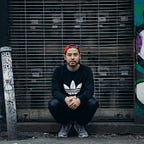VR Prototyping for Designers — Unity Setup for Oculus Quest 2 & MacOS
Whether you are a product designer working in the XR space or just curious and looking to tinker, getting familiar with Unity and experiencing your design in 3D space is key in proofing your concepts.
While there are many tutorials for how to develop a VR app using Unity, getting started and finding the easiest path was quite a task. Oculus documentation, Unity documentation, countless Youtube videos… Where do you begin?
Like many designers I work off of my Macbook and don’t plan on changing my setup. While it’s still recommended to use a PC to prototype in VR (you can just hit play in Unity vs having to build and run your APK), I’ve developed a nice workflow to efficiently prototype off of my Mac. This will be the first of my series of tips and tricks in prototyping for the Quest 2. Today I’ll go over the basics of how you can easily set up your VR prototyping workflow using a Mac OS and Quest.
Let’s begin!
01. Download Unity
- Download the Free Personal version of Unity and the Unity Hub.
- Using the Unity Hub, install the latest Long Term Support (LTS) Editor. When writing this its currently at 2020.3.17f1 LTS. Make sure you select the Android build support, SDK, and JDK in the check boxes before installing.
- Using the Unity Hub, select the VR core template. Give your project a name and choose the location to save the files. Your APK and assets will be stored here.
02. Import & Install Integration Package
Import the Oculus Integration Package from the Unity Asset Store. You can access the Asset Store by going to your Unity Menu: Window > Asset Store.
Once you are on the web page, click on Open in Unity button to bring up the Package Manager window inside Unity. Find the Oculus Integration tab and hit the Import button. It may ask you to update, upgrade, and restart Unity.
03. Configure Build Settings
Now you are ready to configure your build settings for Quest 2.
- Go to your build settings in the Unity Menu: File > Build Settings
- Choose Android under Platform. For the best quality and compression, your Texture Compression should be set to ASTC. However, this will take longer to build each time you want to test in the headset, so for now leave it as the default. When you are done with your prototype, you can always update this setting.
- Hit the Add Open Scenes button (top right) to include your current scene in the build.
- Hit Switch Platform (bottom right).
- Now go to your Player Settings (bottom left).
6. Go to the XR Plug-In Management tab and select Oculus.
04. Setup Your Avatar
Now that the setup and configuration is out of the way, you are now ready to bring in your avatar and hands in VR.
Under your Project tab, search “OVRPlayerController” and drag the prefab (has a blue box icon) to the root of your scene. This brings the pre-configured Oculus camera, tracking, and the ability to move around your scene.
You can now delete XR Rig from your scene since we are going to be using the one provided by Oculus.
Once the player controller is in your scene, select it and update the Rotation Amount to 0.5 and turn off Snap Rotation in your inspector panel. This will smoothen out the rotation in VR.
Drill down and select your OVRCameraRig and in your inspector panel, update:
- Track Origin Type: Floor Level
- Color Gamut: Quest
- Hand Tracking Support: Controllers and Hands
Now go back in your Project tab, and search for LocalAvatar and drag the prefrab under the Tracking Space. This will bring your hands and controllers into VR.
Check off the Start With Controllers setting in your inspector panel.
You are now ready to build this prototype as an APK. Go to your Oculus menu: File > Build & Run
05. Install Your APK to Your Quest
The easiest way to move your APK to your Quest 2 is by using the Oculus Developer Hub.
- Download and Install Oculus Developer Hub (ODH).
- Plug in Quest 2 to your Mac w the USB-C cable.
- Open ODH and in your Device Manager, go to the Apps tab.
- Upload your APK.
Anytime you need to make an update to this prototype, you should now be able to skip this step. Just build & run, and put on your headset.
06. Try it in VR
Congrats! You are now ready to give this demo a try in VR 🤩
- You can now disconnect your USB-C cable from your mac and put on your headset.
- Go to your Library and under your Filter choose Unknown Sources. Select your app.
If you have any questions or want to share your experience, hit me in the comments. 😎
Conclusion — Learning the Basics
Now that you are properly setup for Unity development, I’d recommend the following tutorials to get familiar with Unity and its interface.
Coming Soon
I’ll share more tips on:
- Hover and click events
- Animations
- Misc tips and tricks
